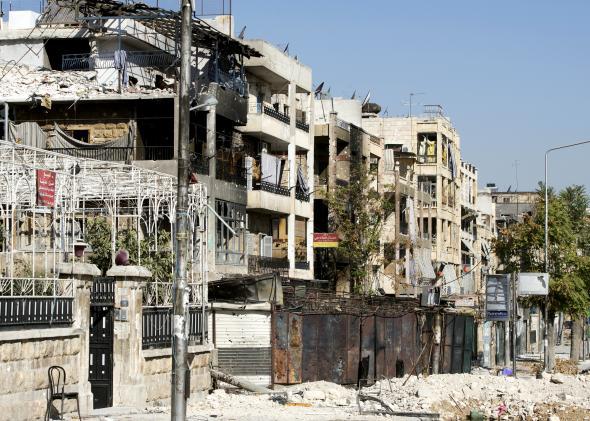On a conference call with reporters this morning, Gareth Price-Jones, the country director for Oxfam in Syria, who recently returned from Damascus, discussed some of the particular challenges of working in the country. In particular, he mentioned one aspect of the crisis that isn’t often discuss, the fact that prior to the civil war breaking out, Syria was at a relatively high state of economic development.
“We’re talking about a middle-income country with substantial infrastructure and that’s much different than the normal context we work in,” Price-Jones said. “It’s much wealthier and there’s much more complex infrastructure we work with. A lot of those systems aren’t functioning because of conflict damage or because they haven’t been maintained for three years and because of looting.”
There are obviously some advantages to this from a humanitarian perspective: Relative to civilians in other conflict areas, more Syrians had some savings to fall back on, or as I discussed recently, more means with which to flee. But as infrastructure has deteriorated and people have used up their savings, it has also made some of the challenges facing aid groups more difficult.
“I’ve run Oxfam programs in many countries, and when someone talks to me about a well, I tend to think of a hole in the ground with a handpump on top,” said Price-Jones. “In Syria, when we talk about a well, what we’re talking about is an industrial water treatment plant. This water is coming from very deep, it tends to be very sulfuric. The kind of water treatment required isn’t just a case of popping in a water purification pill. It’s a much more difficult technical program.”
Oxfam recently helped install generators to power two water treatment plants near Damascus.
With an estimated 6.5 million Syrians now internally displaced and more than 2 million in neighboring countries, the region’s humanitarian crisis is only becoming more acute. Or as one visiting doctor recently told the New York Times, “We have a middle-income country that is transforming itself into something a lot more like Somalia.”
